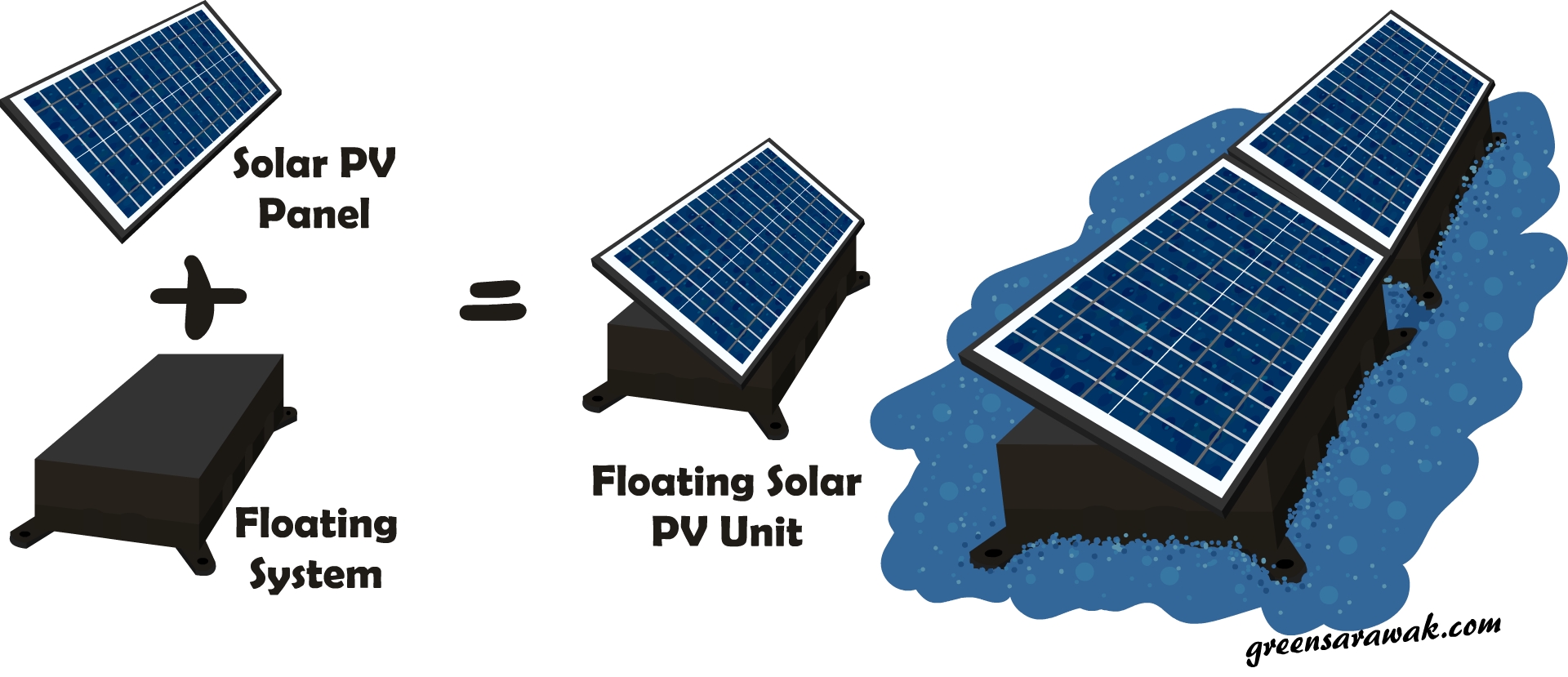Floating solar PV technology, as its name suggests, refers to solar power generation plus a floating system. It features four core technologies, namely, stable floating system, suitable PV modules for water environment, mooring device to adapt the change and under water or floating cable connection to the local power grid. To be specific, in a running floating solar PV power plant, a stable floating system is fixed on the surface of water to prop up PV arrays comprised of a group of wired PV modules (also PV panels or solar panels) on it, so as to make them absorb sunlight as a source of energy and convert it directly into direct current (DC) electricity. With mooring and anchoring device, the floating PV system and PV modules can be secured, as the anchor mooring fixes their position relative to a point on the bottom of a waterway without connecting them to shore. As for underwater cables, they connect PV modules at one end and land power grid at the other end. Electricity generated from PV modules moves through the cables and, more often than not, will be disposed in inverters or a substation, with direct current converted into alternating current (AC). Subsequently, land power grid carries the alternating current to power local residents and industries.

Design Considerations
Design considerations of floating solar PV technology mainly focus on the following aspects:
1. Floating Platform
Floats are typically made of high density polyethylene (HDPE), a thermoplastic polymer produced from the monomer ethylene known for its tensile strength, corrosion resistance, high-temperature resistance, and high strength-to-density ratio. There are some sample commercially-available technologies at home and abroad such as Sungrow Floating System, Topper Floating PV System, Sumitomo Mitsui, Koine Multimedia, Takiron Engineering and Solaris Synergy System.
2. Floating PV Modules
Floating PV modules should follow more stringent requirements compared with land-based like ground and rooftop modules due to exposure to water environment. So it is necessary to take into account the properties such as stability, hardness, resistance to wind, to choose suitable ones for water environment. Yet everything has its dark side. It is also important to consider possible problems like corrosion, possible short circuiting and make responding strategies.

3. Anchoring and Mooring System
Anchoring at the banks is most cost-effective while anchoring at the bottom is most widely installed. That depends on where the floating solar farms are, and surrounding environment and ecological balance should be taken into consideration.
4. Inverters
Based on the geometry of bodies of water and the detailed system design of the floating solar PV power plant, centralized as well as string, inverters are used and can be placed either on land or on the floating platform.
5. Underwater Cables
To make no matter short-distance or long-distance transmission of electrical power smoothly, both DC and AC cables should have excellent weather proofing characteristics. There are mainly two options: regular DC or AC cables on the surface of water lifted by floating body and submerged cables in water proof conduits. (Editor: Claire Jeawin)